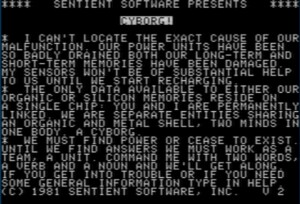Cyborg individualization: the human being of the 21st century
The human being as a cyborg in the 21st century is a “prosthetized being” that looks better and can do more than its counterpart that emerged from the natural evolutionary process. Physical performance now depends solely on technological and scientific advances, and mental performance can also be enhanced by bionized brain implants and exoprostheses, such as wearable computers. Such a “homo cyber sapiens” (Steels 1996) is the logical response to information overload and stimulus overload in modern society.
Virtualization and Optioning: Living in Virtual Worlds
Through the process of virtualization, virtual realities and virtual worlds are becoming an integral part of our everyday lives. Depending on individual activity and inclination, people of the 21st century spend a considerable part of the day in virtual worlds where work, communication, information and entertainment take place. Following the “end of monogamous work” (Gross 1996), telework enables the individual in modern society to become a “oneperson company” as an infopreneur and to exercise a diverse portfolio of value-adding activities.
At the same time, the importance of the immediate, geographic neighborhood and family networks is declining in the private sphere, leading to a gradual dissolution of traditional community structures. However, virtualization is giving rise to alternative forms of communication and social networks that make it possible to experience interpersonal relationships and community regardless of time and place. And so, through the process of virtualization, new social spaces are created in virtual worlds, which are available to the cyborgs of the 21st century as an alternative and supplement to the non-virtual living world.
The virtual triad and the project of modernity
The project of modernity weighs heavily on the shoulders of man in the 21st century, and this pressure for more can and will only be yielded to by technological progress. A release from the “world, human, and self-hostile compulsion to correct” (Gross 1994, 412) is therefore extremely unlikely, and this accelerating, cultural dynamic is only reinforced by the processes of the virtual triad.
For the newly created worlds of experience and simulation fascinate people in modern society precisely because they can convey a more beautiful and better world than the one that is revealed to them when they look out the window non-virtually. In virtual worlds, it is possible to completely reshape one’s identity and appearance, and one can expand one’s non-virtual role portfolio to include virtual desired roles at will. Virtual simulation worlds are de-temporalized and de-spatialized, are completely under human control, and thus make the dream of omnipotence come true, at least in part.
Outlook and conclusion
In the next decades, as a consequence of the processes of the virtual triad, a multitude of virtual worlds will open up, which will be temporarily inhabited by partially disembodied humancyborgs, and in which a multitude of artificial life forms will reside, which will behave more or less intelligently. These virtual worlds will displace the non-virtual everyday world to a considerable extent, because they offer social space for work, diversion, entertainment, communication, relationships and community, so that ad extremis only the basic physical functions in the non-virtual world would have to be taken into account, unless these have also already been substituted by the cyborgization process.
As a consequence of these developments, a multitude of social, economic and political issues and challenges arise that need to be identified, investigated and introduced into the social discourse as soon as possible. For it is important not to forget the double-edged nature of any new technology, which Stanislaw Lem describes with the beautiful aphorism:
“With a razor, you can shave yourself
and cut your neck in the process.
It is the same with technology”.– Stanislaw Lem
